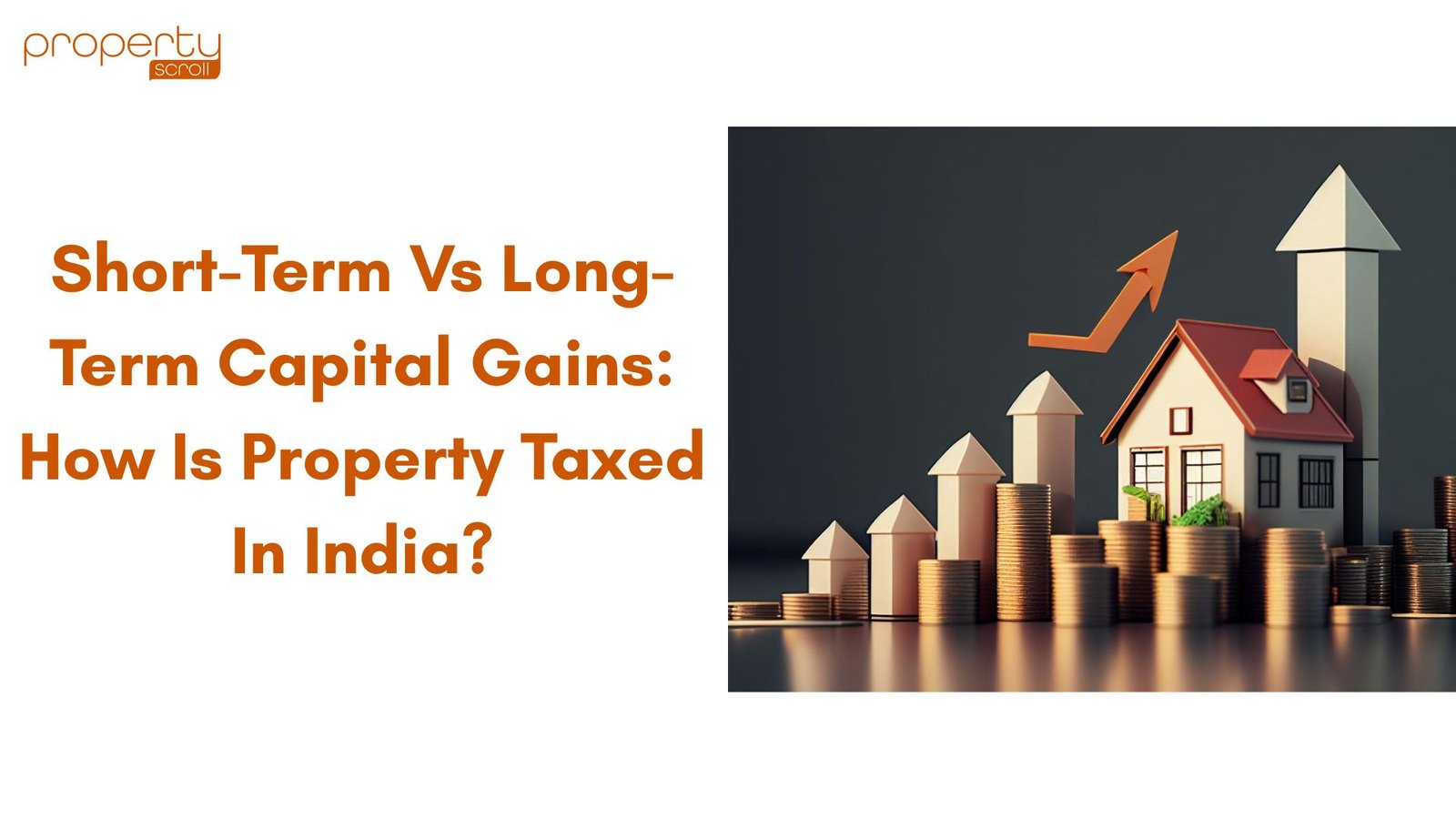Capital Gain Tax
Capital Gain Tax (CGT) is a specific type of tax the government charges on an individual for the capital gain from selling a property. It is calculated on the margin between the property cost and the actual selling price. It is imposed under the tax regime to control the misuse of the earning potential from the real estate industry.
It is one of the major business industries that incurs maximum profit for an investor in the minimum span. Thus, it is necessary to collect a set tax percentage from the property seller on the capital gain from the trade of an owned property. It is necessary to abide by the rules of capital tax in India to avoid any challenges in the future.
Types Of Capital Gain Tax
The capital gain tax is categorised into two different types to make it easier for a taxpayer to pay the taxable amount as per the tenure and prescribed taxation slab. As per the latest amendments in the tax regime this year, now property owners will have two different choices to pay the capital gain tax in India long-term capital gains, or short-term capital gains cases.
Either the taxpayer can pay 20% tax as per the index & can avail the relative advantage, or the individual can pay 12.5% long-term capital gain tax without the indexation if the capital gain exceeds one lakh & twenty five thousand. Let’s discuss about the two types of capital gain taxes to understand this concept accurately.
Short-Term Capital Gains Tax
The tax on short-term capital gains is charged when the owned property is sold within the holding period of 24 months, and the price of the sold property should be higher than the purchase price. Short capital gain tax is 20% of the profit earned which was 15% in the old regime.
Long-Term Capital Gains Tax
The tax is collected on the property sold with a profit margin when it is sold after retaining it for more than 2 years. In the long run, the property value can increase with a good margin. As we have already discussed above that 12.5% LTCGT is charged by the government on capital gain is more than 1.25 lakhs, earlier it was calculated on 1 lakh as per the old tax regime.
Short-Term Vs. Long-Term Capital Gains
Let’s discuss about the major differences between short-term and long-term capital gains. It will give you a clear picture of the tax regime and its implications for the sale of property.
- Applied Tax Rate
The property owner is liable to pay a capital tax of 20% on the sale of a property in the short term as per the latest updates in the capital gain tax regime. It was 15% previously as per the old tax regime.
The taxpayer is liable to pay a 12.5% capital gain tax in the long term without indexation. His percentage was at 10% in the old tax regime. However, the capital gain tax is collected if the conditions match as prescribed in the standard tax rules.
- Applied Tax On Min. Value
In the short-term capital tax gain the said tax percentage is applicable only if the sale value of the property is higher than the purchase cost in the short-term duration. However, the capital gain value must be more than or equal to 1.25 Lakhs in the long-term.
- Holding Period For Property
The holding period for a property in the short-term duration must not exceed 24 months as per the latest amendments. Exceeding the said duration may change the tax slab applications. On the other hand, in the long term, this duration must be more than 24 months as per the latest Amendments.
How Is Property Taxed In India?
Different types of properties are sold and purchased in India, such as; commercial properties, land-based properties, rental properties, and residential plots. Three different types of capital gain tax systems are used to calculate the tax.
- CVS (Capital Value System)
The Capital Value System (CVS) is applied to value the property for the capital gain tax, and the tax is determined based on the set tax percentage of the market value of the property. The current market value of the property is set by the local government authorities, municipal corporation, or the local administration. However, the market is dynamic, and the market value of a property keeps changing as per the market trends.
- RVS (Ratable Value System Or Annual Rental Value System)
The Ratable Value System or Annual Rental Value System (RVS) is applied to calculate the capital gain tax. The annual rental value is calculated by referring to the data of the local municipal corporation. It is not necessary that the property should be sublet, and rent is charged by the owner. But it is a market-assumed annual rental value based on which the tax is calculated. The rental value is assumed based on the condition of the property, size, amenities, features, and location.
- UAS (Unit Area Value System)
The capital gain tax is calculated using another method called the Unit Area Value System (UAS). Under this system, the total value of a property is calculated based on its per unit cost of the built-up area. Further, this per-unit value is multiplied by the total built-up area to calculate the exact taxable amount. The per unit price is derived by considering various factors such as current land price, location, and ultimate usage.
Conclusion
An individual needs to understand the Indian tax regime, and how to calculate the capital gain tax to avoid any misunderstandings and misconceptions. If you still have any doubts, you can read out other detailed explanations on various updated real estate topics on a trusted Indian real estate property site like; “Property Scroll”. It is one of the leading real estate brands in North India, catering to a wide range of premium quality real estate products. It is recommended by industry professionals that one should always pay capital gain tax if it applies to avoid any legal proceedings later.



